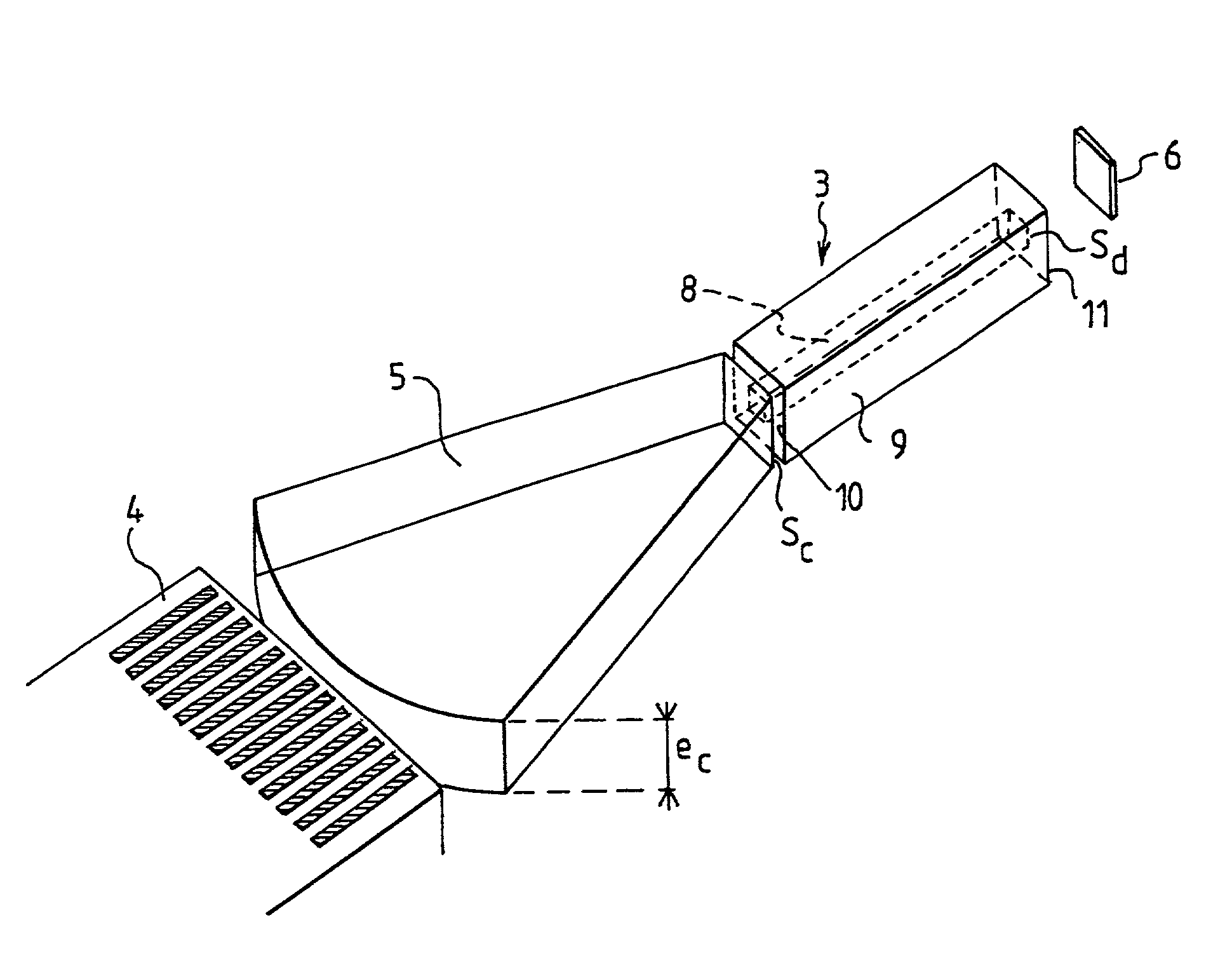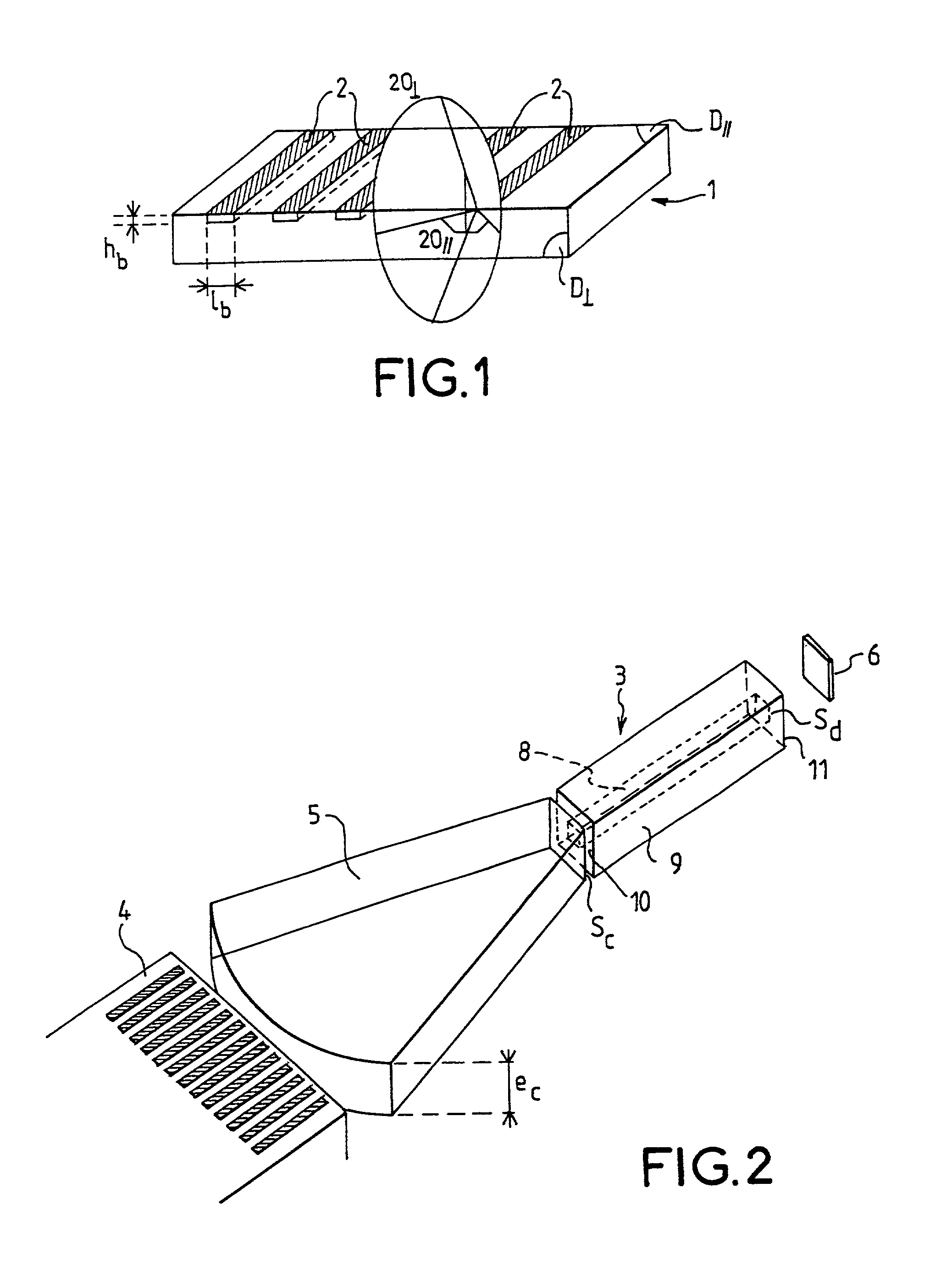Pumped laser and optimized lasing medium
- Summary
- Abstract
- Description
- Claims
- Application Information
AI Technical Summary
Benefits of technology
Problems solved by technology
Method used
Image
Examples
Embodiment Construction
[0051]To provide for a clearer understanding of the principle of operation of the laser according to the invention, the following description, given by way of an illustration that in no way restricts the scope of the invention, relates to a diode-pumped laser associated by means of a simple coupling optical system with a non-uniformly doped active lasing medium, in particular to favor the transverse TEM00 mode of the laser cavity.
[0052]FIG. 2 shows an exemplary architecture of a laser module according to the invention. This module consists of a non-homogeneously doped active lasing medium 3 that favors a particular laser mode such as the transverse TEM00 mode, a pump laser diode 4, means 5 for coupling the pump beam coming from the pump laser diode 4 to the active lasing medium 3. The laser cavity is closed by a mirror 6.
[0053]The mirror 6 is positioned for example in the optical axis of the laser, perpendicularly to the laser beam. It has transmission characteristics suited to opti...
PUM
 Login to View More
Login to View More Abstract
Description
Claims
Application Information
 Login to View More
Login to View More - R&D
- Intellectual Property
- Life Sciences
- Materials
- Tech Scout
- Unparalleled Data Quality
- Higher Quality Content
- 60% Fewer Hallucinations
Browse by: Latest US Patents, China's latest patents, Technical Efficacy Thesaurus, Application Domain, Technology Topic, Popular Technical Reports.
© 2025 PatSnap. All rights reserved.Legal|Privacy policy|Modern Slavery Act Transparency Statement|Sitemap|About US| Contact US: help@patsnap.com



